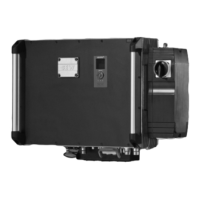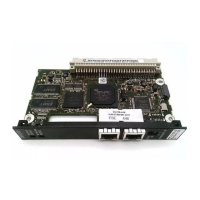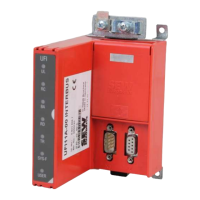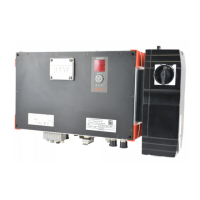13
Parameter setting
Parameter descriptions
Manual – MOVIPRO
®
with EtherNet/IP™ or Modbus/TCP Fieldbus Interface
236
P916 Ramp type
Specifies the type of positioning ramp. This influences the speed or acceleration char-
acteristics during positioning.
The following ramp types are possible:
Ramp type Positioning characteristics
Linear Optimum time, however block-shaped acceleration character-
istic
Squared Softer acceleration, but higher torque demand than Ramp type
"linear"
Sine Very soft acceleration profile, but required torque higher than
with "Squared" acceleration profile
Bus ramp Setting for operation of the device with a PLC.
The PLC generates a cyclical position setpoint that is written
directly to the position controller. The ramp generator is deac-
tivated. The position specifications sent cyclically by the PLC
are interpolated linearly. For configuration, one process output
data word must be set to "position high" and another one to
"position low".
Jerk limitation Based on the principle of the linear ramp, the torque and,
therefore, the acceleration is trapezoidal.
During acceleration, the torque is increased over time in linear
form to the maximum value. In the same way, the torque is re-
duced again over time in linear form to zero. Consequently,
the system experiences almost no vibration.
If a jerk time is set, the positioning time extends relative to the
linear ramp by the set jerk time (→2238). The acceleration
and torque do not increase in comparison with the linear ramp.
P917 Ramp mode
The parameter is only in effect with the "linear" ramp type.
Setting range: Mode1/Mode2
Determines use of the positioning ramp2 (→2235).
• Adjustment "Mode1": Braking deceleration for travel to target position (spot brak-
ing) takes place only with positioning ramp 2. Positioning ramp 1 is used for all
other positioning operations.
If 12bit or 16bit position interpolation is active, it runs in mode1 without dead time
compensation.
• Adjustment "Mode 2": If the travel speed changes during travel, the positioning
ramp2 is always used for brake deceleration. Positioning ramp1 is used for accel-
eration.
If 12bit or 16bit position interpolation is active, it runs in mode2 without dead time
compensation.
16998413/EN – 12/2016

